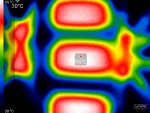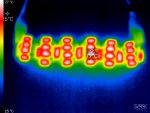Alaskan
0
- Joined
- Jan 29, 2014
- Messages
- 12,025
- Points
- 113
When I used to build high voltage power supplies, I had to make sure they were well matched when used in a full wave bridge, not sure about your use, I suspect they should be matched when paralleled for this use. You can buy 100 diodes and find that the voltage drops are all over the place within .1 to .05 VDC which can make a difference. I'd recommend using single larger current diodes. IDK, maybe manufacturers are doing better now, been a few decades since I looked into this. The problem is, which ever diode has the lower voltage drop will be the one more current flows through, defeating the reason you are paralleling them.
Last edited:








